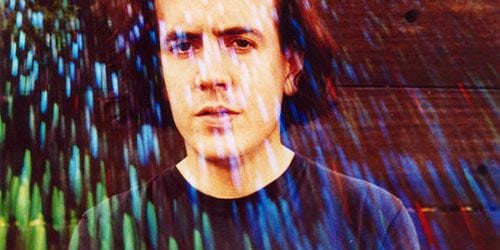
Shoegaze is a genre of juxtaposition. From the first, it has succeeded mainly on the tension created between finely wrought pop melodies and snarling washes of guitar noise. In such context, gleaming from beyond a wall of static, simple strings of notes can take on a deeper resonance, flowing vocals a dreamlike state of heightened clarity. But remove either half of the equation and the arrangements become utterly changed, reduced to either pure noise or pure pop.
After spending the latter half of the ’90s on scattered projects under a variety of pseudonyms, Germany’s Ulrich Schnauss switched to his own name to spend two solo albums, Far Away Trains Passing By and A Strangely Isolated Place, repackaging shoegaze as an electronic format, carefully replacing overt guitar noise with a blinding sheen of reverb. Sparsely arranged, but densely filled out with sweeping pads, crackling synth bass, and insistent breakbeat loops, Schnauss’ tracks have always walked a fine line between ghostly beauty and surging dreampop excess. On those prior releases, Schnauss’ verb-streaked, starkly wistful melodies were presented with just enough restraint and distance to hold up; on his latest, Goodbye, they just barely tip over the edge into a variety of pitfalls.
Before I go into those particular pitfalls, which together serve to erode the latest release’s footing, it’s worth noting that Schnauss’ production skills remain indisputably strong. He has always had a solid melodic sense and ability to make his tracks sound vast and breathtaking, and here he pushes these assets as far as he can. Schnauss’ arsenal of blazing reverb effects and gorgeous synth sounds remain intact. And Goodbye continues a trend in gradually increasing arrangement complexity. Each successive album has introduced more varied, progressive songwriting and a more deeply layered sound. Here, that trend is perhaps at its peak potential: Schnauss has begun to round out his compositions with solos and, allegedly, up to one hundred simultaneous tracks of audio. So the technical skills are there. If there’s a problem, it’s one of judgement.
It’s partly those hundred tracks. Are they all good? Are they all necessary? Is it even possible to make out what is happening in such a case? I mentioned before that older Schnauss benefited from a sense of sleek, minimalist beauty. That effect still comes through here at times, layers smoothly stacking into a single cohesive sound, but at other points there’s just too much clutter, individual tracks becoming buried in soupy haze, and at a couple points even clashing off one another. Sometimes, also, it’s that the drums, always the solid backbone of prior work, are here either removed, buried into near indistinguishability, or even downgraded to light keyboard pop beat. But most seriously, in an apparent attempt to open up his appeal to broader audiences, Schnauss leaves his compositions seeming oddly detoothed. Certainly the weakened drums are part of it, but the bass and prior flirtation with noise seem to have suffered as well. And, most worrisomely, a few of the songs shift their attention almost entirely over to vocalists resting front and center.
The album opens in indecision. “Never Be the Same” is filled with sweeping soundscapes and seas of effects, but the bass is already reduced to a vague sound cloud, the drums miniature and tinny, like a more washed out version of the last album. Still, it’s vastly preferable to “Shine”, which seems aimed not even for the pop charts but for some kind of soft-and-easy favorites station, milquetoastian melodies matched only by the intolerably insubstantial vocals. Even the fuller production in the latter half can’t save this from sounding like a failed Phil Collins b-side. “Stars” improves on that template, but only so far. Foregrounded vocal work continues to hinder (though here seeming much better suited to the song), and all promise of complexity in the final crescendo gets lost in one the album’s most unfortunate sound pile-ups. “Einfeld” thankfully loses the overt vocals, but also tends to resemble Deep Forest or one of its new-age-quoting contemporaries.
If the album has a saving grace, a point of promise for the future, it’s in two tracks buried in the second half. “A Song About Hope” is exactly the song Schnauss seems to have been seeking all album. The melodies soar, the dozens of layered pads mix into a single unstoppable wave, and the the vocals are just another instrument, completely at ease in the mix. And best of all, the following “Medusa” dares to run directly counter to the rest of the album (and any president from Schnauss’ other solo work), retoothing and recapturing a bit of shoegaze’s occassional dalience with metal, here in the form of crushing industrial bass, white noise piled thick as concrete, and molten guitar work. Add to that a surprising 8-bit lead, glimmering rising portamento chords, a propensity for quick changes, and a deep, lonely choir fadeout, and it’s easily the best work on the album. I can only hope that, if Goodbye is encoded with a glimpse of Schnauss’ future, it’s in “Medusa”, not “Shine”.
